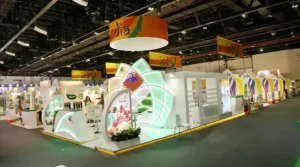International trade shows offer unparalleled opportunities for businesses to expand their reach, forge global partnerships, and showcase their products on a global stage. However, participating in trade shows abroad comes with its own set of challenges, including navigating cultural differences, language barriers, and diverse business practices. Success in international trade shows requires a deep understanding of cultural nuances and adherence to best practices tailored to each market. This article delves into the cultural considerations and best practices for navigating international trade shows on exhibition stand builders in Amsterdam, empowering businesses to thrive in diverse global environments.
I. Understanding Cultural Nuances
1.1 Importance of Cultural Intelligence
Cultural intelligence, often abbreviated as CQ, is the ability to understand, adapt to, and work effectively across different cultural contexts. Exhibitors must recognize that cultural nuances can significantly impact business interactions, influencing everything from communication styles to negotiation tactics. Developing cultural intelligence equips exhibitors with the skills and awareness needed to navigate cultural differences sensitively and successfully.
1.2 Hofstede’s Cultural Dimensions
Hofstede’s cultural dimensions theory provides a framework for understanding how culture influences behavior and values. These dimensions include power distance, individualism vs. collectivism, masculinity vs. femininity, uncertainty avoidance, and long-term vs. short-term orientation. By familiarizing themselves with these dimensions, exhibitors can gain valuable insights into the cultural preferences and tendencies of their target markets, enabling them to tailor their approach accordingly.
II. Language and Communication
2.1 Language Proficiency
Effective communication is essential for success in international trade shows, and language proficiency plays a crucial role in facilitating meaningful interactions. While English is often the lingua franca of business, exhibitors should not assume that all attendees are fluent in English. Providing multilingual materials, hiring interpreters, or having staff members who speak the local language can enhance communication and ensure that messages are understood clearly.
2.2 Non-Verbal Communication
Non-verbal communication, including body language, gestures, and facial expressions, can vary significantly across cultures and may convey different meanings or intentions. Exhibitors should be mindful of non-verbal cues and adapt their own behaviors to align with local customs and preferences. By demonstrating awareness and sensitivity to non-verbal communication, exhibitors can build rapport and trust with attendees more effectively.
III. Cultural Etiquette and Protocol
3.1 Greetings and Introductions
Greetings and introductions are often governed by specific etiquette and protocol in different cultures. Exhibitors should research and adhere to local customs regarding greetings, such as bowing in Japan or exchanging business cards with both hands in China. Demonstrating respect for cultural etiquette in initial interactions sets a positive tone and fosters goodwill with attendees.
3.2 Business Attire
Business attire expectations vary across cultures, with some markets favoring formal business attire while others have more relaxed dress codes. Exhibitors should research the cultural norms of the trade show location and dress accordingly, taking into account factors such as climate, industry standards, and local customs. Adhering to appropriate dress codes demonstrates professionalism and respect for cultural traditions.
IV. Relationship Building and Networking
4.1 Building Trust and Rapport
Building trust and rapport is essential for establishing successful business relationships, particularly in international contexts where cultural differences may influence perceptions and expectations. Exhibitors should invest time in developing genuine connections with attendees through active listening, empathy, and mutual respect. Building trust lays the foundation for long-term partnerships and business opportunities.
4.2 Networking Etiquette
Networking etiquette varies across cultures and can impact the effectiveness of networking efforts at trade shows. Exhibitors should familiarize themselves with local networking customs, such as the importance of personal connections in some cultures or the preference for direct communication in others. Adapting networking strategies to align with cultural norms enhances the likelihood of meaningful interactions and collaborations.
V. Adapting Marketing and Promotional Strategies
5.1 Localization of Marketing Materials
Localization of marketing materials is essential for resonating with international audiences and demonstrating cultural sensitivity. Exhibitors should tailor their marketing collateral, including brochures, presentations, and signage, to reflect the language, preferences, and values of the target market. Localization enhances brand perception and facilitates meaningful engagement with attendees.
5.2 Cultural Sensitivity in Promotional Activities
Promotional activities should be culturally sensitive and respectful of local customs and sensitivities. Exhibitors should avoid marketing strategies that may be perceived as offensive or culturally inappropriate, such as humor that relies on cultural stereotypes or imagery that is considered taboo. Demonstrating cultural awareness in promotional activities builds credibility and fosters positive perceptions of the brand.
VI. Conclusion
Successfully navigating international trade shows requires a nuanced understanding of cultural nuances and a commitment to cultural intelligence and sensitivity. By recognizing and adapting to cultural differences in language, communication, etiquette, relationship building, and marketing strategies, exhibitors can effectively engage with international audiences, build trust and rapport, and capitalize on business opportunities in diverse markets. Embracing cultural diversity and best practices for international trade shows on Psychology of Color, empowers businesses to succeed on the global stage and foster meaningful connections with stakeholders around the world.
